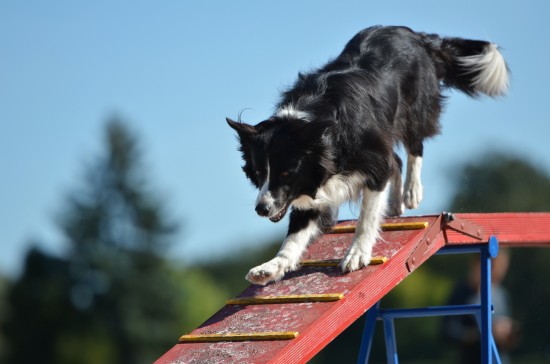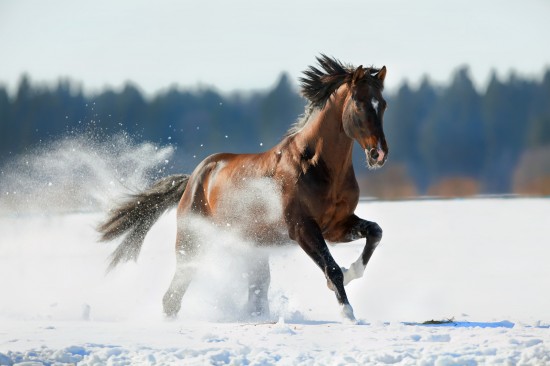
Many of us have a fairytale image of a child and their dog. We remember Timmy and Lassie with Lassie listening to all of Timmy's problems, providing a big furry neck when a hug was needed, and saving Timmy from all the wells he managed to fall into. We naturally think, "If only I had a dog like Lassie..." but Lassie was just a character on television. She was actually a composite of 5-7 male Rough Coated Collies, all were airbrushed to look alike and each had specific jobs to do while on the set. When off camera, the collies all lived very structured lives. Their owners provided everything the dogs needed; from food to affection to discipline, they were never left to just "run" free as it might appear in the show. Dogs left alone to be dogs will be, just that, dogs. Dogs are not furry children, which we all know, but it's hard to look at them and not see the common traits. Dogs appear to do some of the same behaviors children do but they do it for different reasons.
Dogs are born with natural instincts of self-preservation, chasing, biting, being territorial or protective, and a need to be part of a social group. From the Chihuahua puppy you picked out at the breeders to the older Great Dane you rescued, all have specific needs and drives. Depending on the breed of dog, some of these needs may be more intense. They communicate with their body and mouth. All dogs have teeth and are born knowing how to use them. Puppies use their teeth often with their brothers and sisters (litter mates) to let them know if they are playing too hard or have something they don't want taken away. Dogs lick to show submission, to groom, or to get another dog to regurgitate their food. Dogs hug each other to show who's more dominant, wrestle to show who's bigger and stronger, and chase to hone hunting skills. Squealing is only done when hurt to tell the bigger dog that they give up or done by prey when it's being chased.
We, as humans, are very physical, too. Children are taught to hug and kiss to show affection. They wrestle to play, squeal to show excitement and run to release all the energy pent up in those tiny bodies. When a child runs, it activates a dog's need to chase and bite.. Children want to hug or kiss on their dogs to show affection and don't realize they may be making their dog uncomfortable. When children are too rough and hurt us, we stop them and tell them why. Dogs lack the verbal skills to explain and reason with a child. Therefore, teaching both dog and child how to interact accordingly is important! Owning a "safe" dog is more about how the dog is raised (nurtured) and "trained" than the breed.
Dogs and children are not natural buddies. Dogs and puppies view children in their household as lesser pack mates. Children motivate a dog or puppy to bite or nip them by wrestling, squealing, or playing mouthy games. Children do not understand the old adage, "Let sleeping dogs lie." Children don't understand a dog's need for personal space and are unable to pick up on the subtle cues that the dog is uncomfortable. The dog is not trying to be mean by biting the child but communicating the only way he knows how. The owner of the dog has the responsibility to keep both children and the dog safe.
Biting statistics are scary! Did you know that most bites that are reported are children 14 years and under. The majority of those children are between the ages of 5 to 9 years, with boys being bitten most often. The scariest statistic is that it's not the neighbor's dog biting these children, it's their household pet.
So how do I make my dog safe for children and children safe for my dog? In short, it is time, money, and effort. If you lack in any of these areas, then you may want to rethink about having a dog (or a child). Once again, dogs and children have their similarities, having either is a privilege but both are a responsibility. Depending on the breed of dog, that privilege/responsibility could last from 8-20 years. Dogs need time with their pack/family. They are born with a need to be part of a family unit. Your dog wants nothing more than to spend time with you. Time spent can vary from playing games, to training sessions, to just sitting on the couch with Fido at your feet.
Money is the daily expense of dog ownership. Food, veterinarian care, grooming, and toys make up the quick list but there is also the expense of training for you and your pooch. There are usually additional vet bills, remodeling bills, or even lawyer fees, added if you decide to skip the training step...
Effort is a little trickier. Webster's definition of effort is "a vigorous or determined attempt". Dogs understand best when rules are made very clear and one of the biggest mistakes dog owners make is the failure of being consistent. Dogs do not have deductive reasoning skills. They are reactionary animals. We take away and change their sense of security and balance when we are always change the "rules" by not being consistent. Training is a very important part of the positive interactions between your family and your dog. Simply engaging in training starts your family and new puppy or dog on the right road to co-existing happily, this begins to help establish rules and boundaries putting you in a leadership position for your dog.
Children and dogs are similar in so many ways. They both need rules, structure and boundaries to keep them safe. They both require constant supervision. Both need to learn how to properly interact with each so that everyone can live happily ever after.
Talk Dog Training and Coaching is a professional people and dog training service. We specialize at In-Home training. Coming into your home, getting the whole family involved to address all behavioral issues in the dogs' enviroment. We give you the tools and knowledge to have a well behaved friend for life.
 Competing In Your First Dog Agility Show - What To Do
Competing In Your
Competing In Your First Dog Agility Show - What To Do
Competing In Your
 Getting Your Horse Ready For Winter
Getting Your Hors
Getting Your Horse Ready For Winter
Getting Your Hors
 Rabbit Basics - Ten Facts All Potential Owners Should Be Aware Of
Rabbit Basics - T
Rabbit Basics - Ten Facts All Potential Owners Should Be Aware Of
Rabbit Basics - T
 Why I Have a Horse
Why I Have a Horse
 Why Choose A Boxer Dog
I have owned and loved boxer dogs for the past 25 years
Why Choose A Boxer Dog
I have owned and loved boxer dogs for the past 25 years
Copyright © 2005-2016 Pet Information All Rights Reserved
Contact us: www162date@outlook.com